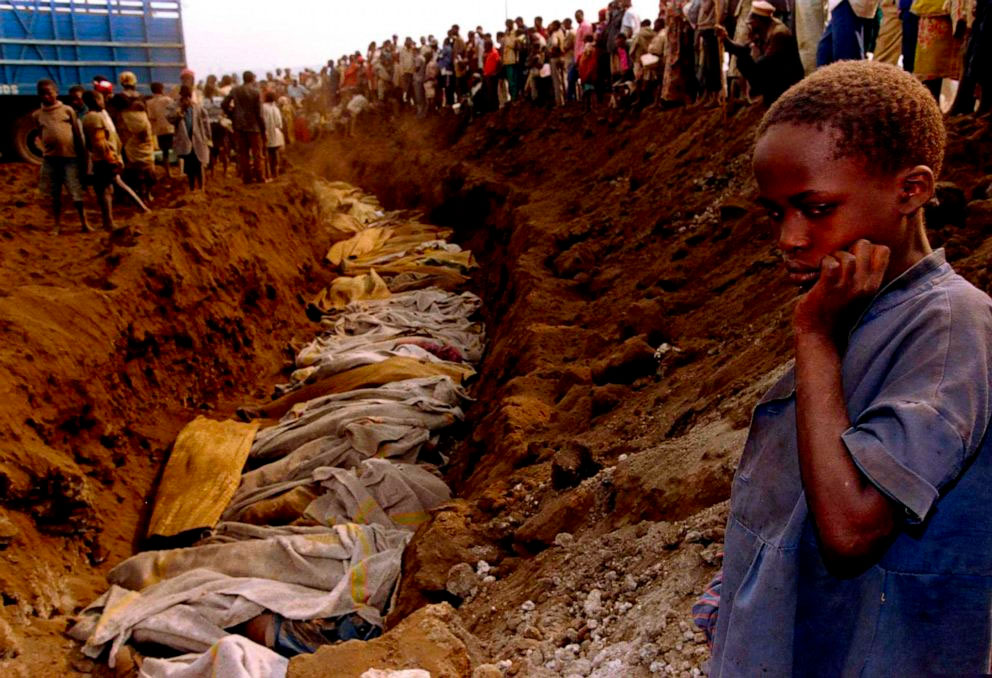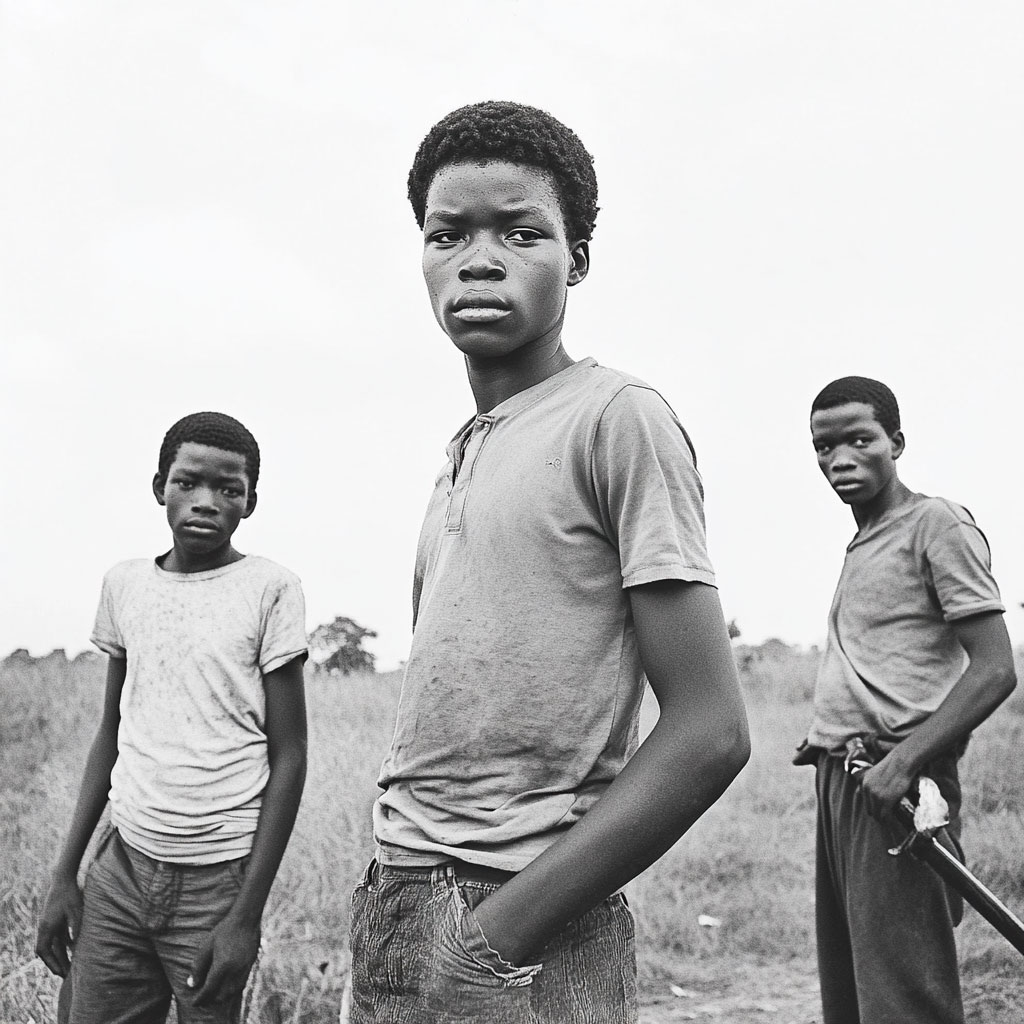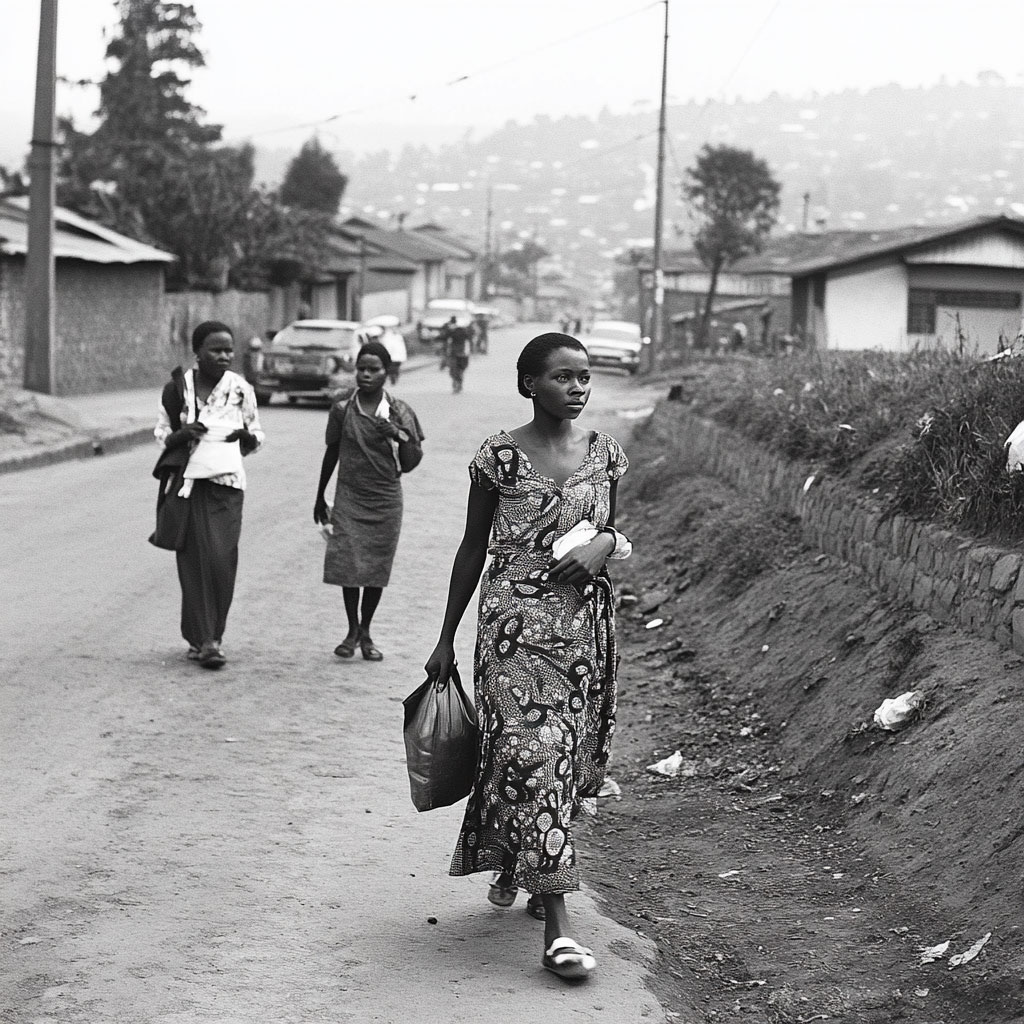An in-depth analysis of the 1994 Rwandan Genocide, examining its causes, key figures, major events, and lasting impacts.
Between April and July 1994, Rwanda experienced a genocide that resulted in the deaths of approximately 800,000 people, predominantly Tutsis and moderate Hutus. The violence was orchestrated by extremist Hutu factions following the assassination of President Juvénal Habyarimana. Militias like the Interahamwe, supported by government forces, executed mass killings across the country. The Rwandan Patriotic Front (RPF), led by Paul Kagame, launched a military campaign that eventually halted the genocide by July 1994. The international community’s response was widely criticized for its inadequacy. Post-genocide, Rwanda faced immense challenges in justice, reconciliation, and rebuilding.
What Were the Reasons for the Rwandan Genocide (1994)
The Rwandan Genocide in 1994 was the outcome of decades of political, social, and economic conflict, rooted in the country’s colonial history and reinforced by power struggles after independence. The ethnic categories of Hutu and Tutsi were socially and economically constructed during German and later Belgian colonial rule, when colonial authorities promoted Tutsis to administrative and educational roles. This formalized a social hierarchy that had not existed in such rigid terms before colonization.
After Rwanda gained independence in 1962, power shifted to the Hutu majority, leading to cycles of violence, discrimination, and refugee crises. Several pogroms occurred against Tutsis, notably in 1959, 1963, and 1973. Hundreds of thousands of Tutsis fled to Uganda, Burundi, Zaire, and Tanzania. These exiled communities formed the basis of the Rwandan Patriotic Front (RPF), a rebel group that sought to return and reclaim rights denied under the Hutu-dominated regimes.
Inside Rwanda, President Juvénal Habyarimana, who came to power in 1973, built a one-party state that excluded Tutsis from meaningful participation in government, military, and education. Economic decline in the 1980s, compounded by falling coffee prices (a major export), structural adjustment programs, and rising unemployment, created social unrest and discontent. The invasion by the RPF in 1990 from Uganda led to a civil war and intensified government propaganda that portrayed all Tutsis as enemies.
From 1990 to 1994, government-backed media, especially the radio station Radio-Télévision Libre des Mille Collines (RTLM), and newspapers like Kangura, spread anti-Tutsi rhetoric. The Habyarimana regime and allied extremists, notably the Akazu (a powerful inner circle around the president), began to prepare armed militias, including the Interahamwe, and stockpiled weapons.
The assassination of President Habyarimana on April 6, 1994, after his plane was shot down near Kigali, acted as the trigger for the genocide. Extremists used the event to justify a full-scale attack on the Tutsi population, which they had already planned in detail. In the weeks that followed, state institutions, security forces, and militias conducted coordinated killings across the country.
The genocide was not a spontaneous outburst of violence. It was the result of long-term policies of exclusion, fear-based propaganda, and calculated political strategy aimed at eliminating perceived opposition.

Who Was Involved in the Rwandan Genocide (1994)
The Rwandan Genocide involved a wide range of actors who played different roles in organizing, executing, resisting, or being targeted by the violence. The main groups can be identified as perpetrators, victims, opposing forces, and international actors.
The primary perpetrators were Hutu extremists, many of whom were part of the ruling MRND party (Mouvement Révolutionnaire National pour le Développement). These included top political figures, army officers, local officials, and members of the Akazu, a powerful clique close to President Habyarimana. The Rwandan Armed Forces (FAR) and the elite Presidential Guard were central in coordinating and carrying out the genocide. Paramilitary groups such as the Interahamwe (meaning “those who fight together”) and Impuzamugambi were trained, armed, and directed to kill civilians. These militias were responsible for massacres using small arms, grenades, and machetes.
Ordinary civilians also took part in the killings, often under pressure or threats. Local leaders, including mayors (bourgmestres) and administrative officers, compiled lists of Tutsis and organized attacks. Roadblocks were set up to control movement and identify targets. State-run radio encouraged participation, giving real-time directions and spreading hate speech.
The victims were primarily Tutsis, who were systematically identified and murdered. An estimated 75% of the Tutsi population was killed in about 100 days. Moderate Hutus who opposed the killings or supported Tutsi neighbors were also targeted. Many Hutus were forced to kill to prove loyalty or avoid being executed themselves. Some members of the Twa minority, a small indigenous group, were also victims.
The opposing force was the Rwandan Patriotic Front (RPF), led by Paul Kagame. Composed mostly of Tutsi exiles, the RPF invaded Rwanda from Uganda in 1990 and resumed military operations in April 1994 to stop the genocide. They eventually captured Kigali and ended the killings by July.
International actors, including the United Nations, maintained a small peacekeeping mission (UNAMIR) under General Roméo Dallaire, but it was underfunded and restricted. Foreign governments, including France, Belgium, and the United States, were aware of the killings but failed to intervene effectively.
All these groups contributed directly or indirectly to the scale and structure of the genocide.
The Leaders of the Rwandan Genocide (1994)
The Rwandan Genocide was not a spontaneous event. It was organized and executed by a network of political, military, and media figures who planned and coordinated the killings. These individuals held positions of authority and used state institutions and communication channels to implement mass murder.
Théoneste Bagosora, a former colonel in the Rwandan army and director of the Ministry of Defence’s office, was one of the most influential figures. Following the assassination of President Habyarimana, he assumed de facto control of the military and was central in organizing the genocide. He was later convicted by the International Criminal Tribunal for Rwanda (ICTR) for genocide and crimes against humanity.
Jean Kambanda, the interim Prime Minister appointed in April 1994, led the government that carried out the genocide. He provided political backing and financial support to militias. In 1998, he pleaded guilty to genocide before the ICTR and was sentenced to life in prison.
Félicien Kabuga, a wealthy businessman, was the main financial sponsor of the genocide. He financed the Interahamwe militia and imported weapons, including tens of thousands of machetes. Kabuga also founded Radio-Télévision Libre des Mille Collines (RTLM), which broadcast hate speech and incited violence daily. He was arrested in 2020 after 26 years on the run and is being prosecuted by the UN Mechanism for International Criminal Tribunals.
Colonel Anatole Nsengiyumva, commander of the Gisenyi military sector, coordinated military support for mass killings in northwestern Rwanda. He oversaw the training and arming of militia groups. He was convicted of genocide by the ICTR.
Joseph Nzirorera, secretary-general of the ruling MRND party, played a political and organizational role. He coordinated logistics for the Interahamwe and was indicted by the ICTR. He died in custody in 2010.
Jean-Bosco Barayagwiza, a founding member of the extremist party CDR (Coalition pour la Défense de la République), also held a key role at RTLM. He helped develop the ideology of ethnic extermination and directed propaganda operations.
These individuals, through coordination between the army, local administration, and media, ensured that killings were systematic and widespread. They used their influence to mobilize citizens, distribute weapons, and monitor execution of orders across the country.

Was There a Decisive Moment?
The most decisive moment of the Rwandan Genocide occurred on the evening of April 6, 1994, when the plane carrying President Juvénal Habyarimana and President Cyprien Ntaryamira of Burundi was shot down near Kigali International Airport. The crash killed everyone on board. The aircraft, a Dassault Falcon 50, was hit by surface-to-air missiles while approaching the runway. The source of the attack remains disputed, with accusations directed at both Hutu extremists and the Rwandan Patriotic Front (RPF). However, the event provided a direct trigger for the mass killing campaign that followed.
Within hours of the crash, roadblocks were erected throughout Kigali. The Presidential Guard began targeting opposition leaders, starting with Prime Minister Agathe Uwilingiyimana, who was murdered the next morning. UN peacekeepers from Belgium who were protecting her were captured and later killed. These initial assassinations marked the beginning of a coordinated plan to eliminate political opponents and initiate the systematic extermination of the Tutsi population.
The speed and organization of the response suggest that the attack on the president’s plane was not the start of the plan, but rather its activation point. Hutu extremist leaders had already drawn up lists of Tutsi civilians, stockpiled weapons, and trained militias. Media outlets such as RTLM radio and Kangura newspaper had prepared the population with propaganda that dehumanized Tutsis and warned of a supposed Tutsi invasion.
As the killing spread across the country, regional and local officials received direct orders to mobilize populations and carry out massacres. The military and gendarmerie provided arms and logistical support. The machinery of genocide had been put in place in advance; the president’s death was used to justify its immediate implementation.
No significant action was taken by foreign governments or the United Nations in the days following the assassination, despite clear evidence of organized mass murder. This lack of immediate intervention allowed the killings to escalate quickly and continue without effective resistance. The downing of the plane marked the transition from political instability to genocide, and it enabled the perpetrators to begin their operation under the claim of defending national security.
Major Battles of the Rwandan Genocide (1994)
The Rwandan Genocide was not a conventional war. It involved organized massacres, systematic targeting of civilians, and political extermination, not large-scale set-piece battles. However, military operations conducted by the Rwandan Patriotic Front (RPF) to stop the killings did involve intense engagements against the Rwandan Armed Forces (FAR) and allied militias. These confrontations shaped the timeline and the ultimate end of the genocide.
The genocide began on April 6, 1994, and the RPF resumed its military campaign within hours of President Habyarimana’s assassination. The RPF’s military wing, led by Major General Paul Kagame, launched coordinated attacks from its positions in northern Rwanda, particularly in Byumba and Mutara, where it had maintained a presence since the 1990 invasion.
1. Battle for Kigali (April – July 1994)
The most critical operation was the battle for Kigali, the capital. The RPF attacked from the north and east, facing stiff resistance from the FAR and militias entrenched in urban positions. Fighting was intense in key areas such as Remera, Kanombe, and Kacyiru. The RPF used mobile infantry units and artillery to gain ground gradually while trying to limit civilian casualties. By July 4, 1994, the RPF had taken control of Kigali. The fall of the capital marked the collapse of the interim government and disrupted command structures coordinating the genocide.
2. Southern Campaign (May – July 1994)
Following gains in the capital, the RPF turned south. The cities of Gitarama and Butare were key targets. Gitarama had been the seat of the interim government, while Butare was one of the last regions to join the genocide campaign. The RPF’s strategy combined military pressure and negotiations with local leaders. Resistance was strong in some areas due to the presence of government troops and large numbers of Interahamwe. After weeks of fighting, both cities were taken, and RPF units established control across the central-southern zone.
3. Eastern Operations
The RPF also advanced into the eastern provinces, including Kibungo and Rwamagana. These areas were important corridors for refugee and militia movement into Tanzania. The RPF’s eastern campaign involved clearing roadblocks, disarming militias, and protecting fleeing civilians. The eastern front was less fortified than the capital but presented logistical challenges due to dispersed population centers and terrain.
4. Western Offensive and the Congo Border (July 1994)
As genocide leaders fled westward, the RPF launched operations in Kibuye, Cyangugu, and Gisenyi. These towns were heavily defended by remaining FAR elements. Gisenyi, near the Zaire (now DRC) border, became the final stronghold of the genocidal regime. By mid-July, the RPF had secured the region, but tens of thousands of Hutus, including perpetrators, had already crossed into Zaire, triggering massive refugee movements.
The military success of the RPF ended the genocide by mid-July 1994, after about 100 days of mass killings. The offensives were swift but costly, conducted in parallel with efforts to protect civilians where possible. The operations also set the stage for regional instability, as many genocidaires regrouped in eastern Zaire.

Was There a Turning Point?
The turning point in the Rwandan Genocide occurred with the capture of Kigali by the Rwandan Patriotic Front (RPF) on July 4, 1994. This military success dismantled the command structure of the interim government and marked the effective end of organized genocide across the country. It followed three months of coordinated military operations during which the RPF advanced steadily from the north and east toward the capital.
The fall of Kigali had immediate consequences. Government leaders fled, including senior military officers, ministers, and local administrators who had organized and supervised the killings. With their departure, militia coordination collapsed, and large groups of Interahamwe and other perpetrators began fleeing toward the western borders. The population shift was rapid—by mid-July, over two million Rwandans had crossed into Zaire, Tanzania, and Burundi, creating one of the largest refugee crises in African history.
This point also shifted the conflict from a one-sided campaign of extermination to a broader military takeover by the RPF. With Kigali under control, the RPF had the capacity to secure other regions, dismantle roadblocks, and restore administrative control. The advance toward the south and west continued, with cities like Butare, Gitarama, Cyangugu, and Gisenyi falling in quick succession. The genocide effectively stopped as the RPF took control of each zone.
Internationally, the fall of Kigali intensified pressure on global institutions. Media coverage of the refugee crisis and mounting death toll forced a response. On June 22, 1994, France had already launched Opération Turquoise, a UN-mandated humanitarian mission in southwestern Rwanda. Though intended to protect civilians, it also became a corridor through which many genocidaires escaped.
Internally, the power shift enabled the RPF to form a new transitional government on July 19, 1994, composed of members from different parties, although dominated by the RPF. This government focused on rebuilding institutions, restoring basic services, and beginning the process of justice and reconciliation.
The military seizure of Kigali not only stopped the centralized killing campaign but also marked the beginning of Rwanda’s long and complex process of recovery. It was the most decisive operational shift during the 100-day genocide.
Consequences of the Rwandan Genocide (1994)
The Rwandan Genocide caused profound political, humanitarian, and regional consequences that continue to shape the country and its neighbors. In just 100 days, an estimated 800,000 people—mostly Tutsis and some moderate Hutus—were killed. The scale and speed of the killings left Rwanda with destroyed institutions, widespread trauma, and deep demographic imbalances.
One of the most immediate effects was the displacement of millions. By July 1994, more than 2 million Rwandans had fled to Zaire (now the Democratic Republic of the Congo), Tanzania, Burundi, and Uganda. Among them were tens of thousands of genocidaires, including former soldiers, militia leaders, and members of the interim government. These groups regrouped in eastern Zaire, where they launched cross-border raids and contributed to regional instability that later escalated into the First Congo War (1996–1997) and Second Congo War (1998–2003).
Rwanda itself was left with infrastructure in ruins, a collapsed healthcare system, and an empty public administration. The country’s economy contracted by more than 50% in 1994. Basic services, including water, electricity, and schooling, were inaccessible in many areas. Over 400,000 children were orphaned, and tens of thousands of women suffered sexual violence. HIV infection rates increased significantly due to systematic rape used as a weapon during the genocide.
Justice became a central issue. In 1994, the International Criminal Tribunal for Rwanda (ICTR) was established in Arusha, Tanzania. Over its mandate, it indicted 93 individuals, including high-ranking government and military officials. Inside Rwanda, more than 12,000 community-based Gacaca courts tried around 2 million people from 2001 to 2012, focusing on local participation and reconciliation.
Politically, the Rwandan Patriotic Front (RPF) took control and formed a transitional government under Paul Kagame. A new constitution in 2003 banned ethnic political affiliations and criminalized genocide denial. Ethnic identification was removed from national ID cards. The government emphasized national unity, centralized control, and strict laws to maintain order.
Internationally, the genocide exposed major failures by the United Nations, France, Belgium, and the United States. UN peacekeepers were present during the killings but lacked the mandate and personnel to stop them. France’s Operation Turquoise remains controversial due to its perceived protection of fleeing genocidaires.
The genocide reshaped Rwanda’s internal structure and altered the regional balance of power. Its long-term consequences continue to influence security, politics, and humanitarian policy in Central Africa.
Back to the Wars section